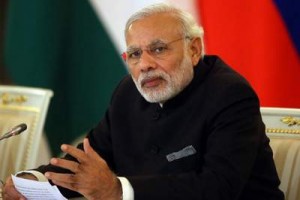Muhammad Saeed
Terrorists, by carrying out attacks especially on innocent and defenseless or unarmed population of a country, seek to demonstrate a variety of strengths, in a bid to primarily legitimize and substantiate their ideological and kinetic command as compared to an existing authority. Terrorists actually send the message, by indiscriminate attacks like RAW supported Quetta carnage of August 8, that they hold the capacity to either destroy a society or alternately shield it from all types of insecurities, provided that society conforms to their supremacy instead of a helpless and spineless authority under which they currently live an uncertain life. Under mentioned are the pronounced objectives and key messages from terrorists, to a society as well as its government, that the authorities they live under:
Cannot protect its own population but we can.
Cannot protect the symbols of its authority but we can.
Cannot protect society’s institutions but we can.
Cannot protect society’s infrastructure but we can.
Cannot protect very own officials but we can.
Cannot end the threat of more terrorism but we can, And
Cannot maintain normal, peaceful and morally virtuous conditions in the society but we can.
There is no internationally accepted definition of terrorism so far, but according to the US State Department, terrorism is defined as “premeditated, politically motivated violence perpetrated against non-combatant targets by sub-national groups or clandestine agents”. For many experts, a terrorist attack is one that intentionally targets civilians; but militant operations against government targets are generally classified as ‘insurgent’ or ‘guerilla’ warfare, as going on in Kashmir Palestine and elsewhere. The difference is imperative to tackle both types of onslaughts. Terrorists do not enjoy the protection of international humanitarian law, while the status of insurgents is more blurry as it also represents liberation from illegal occupation of a state or force like India an Israel. Terrorists across the world including Pakistan have overwhelmingly targeted civilians or unarmed innocent people. Statistics from the Global Terrorism Database, indicate that out of 156,772 attacks worldwide from 1970 to 2015, a total of 132,545 did not include guerilla or insurgent actions. In other words, 85% of these attacks were against civilians or unarmed people. From Pakistan’s perspective, out of 12,768 attacks during same period, 11,218 violent events were not related to insurgency but religiously or radically motivated attacks by Taliban or alike. That means 87% were inflicted, on soft targets (unarmed civilians) of propaganda value, illustrating the intended messages as enumerated above.
Pakistan’s history to the most extent, is still devoid of a suitable counter narrative to an obvious narrative of blood thirsty radicals, though they have severely stained the bright face of Islam. National Action Plan, apart from kinetic resilience, though puts requisite emphasis on this aspect but ground reality is that an indispensable spirit to create and enact a wise counter narrative primarily fulfilling essentials of 21st Century and depicting bright face of Islam, as envisioned by the founders of Pakistan, is still dwindling. Roots of a counter narrative can still be explored in the very history of Pakistan movement which in effect started when Muslims of Subcontinent were persuaded by a group of enlighten people for learning the education of the time. All India Muslim League was established in 1906 by a group of progressives to put Muslims on the path of progress. Pakistan can still be saved from radicalization if pragmatic policy for education is made the pivot in line with the education policy guidelines given by Muhammad Ali Jinnah, the founder of Pakistan.



